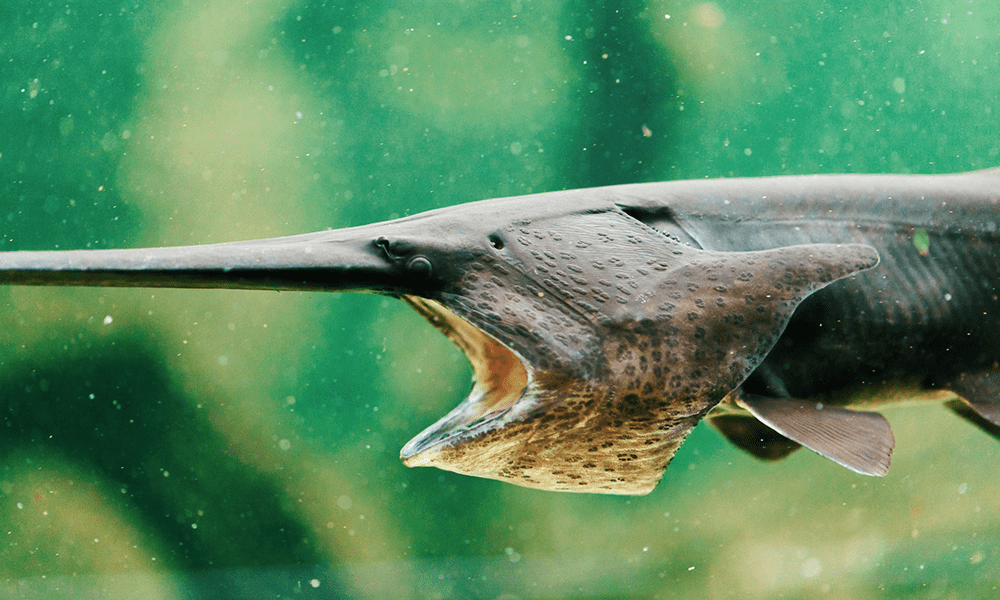During “Shark Week,” don’t forget funky paddlefish
JMU News
HARRISONBURG, Va. — While sharks are taking the spotlight this week on Discovery Channel, a James Madison University researcher says paddlefish, a weird fish from the murky depths of America’s great river systems, deserve some attention too.
It’s not because they could be cast as man-eating monsters in some Hollywood blockbuster, but rather because of what paddlefish can teach us about our own bodies and how they develop and grow.
Marcus C. Davis, an associate dean in the JMU College of Science and Mathematics and a professor of biology, said he chose paddlefish for his research due to their unique position on the vertebrate family tree and because of how little their skeletons have evolved over time.
"Paddlefish are like time capsules for us," he said. "When we compare the genes they use to build their skeletons to other research animals, such as mice or zebrafish, we can test hypotheses about how the diversity of vertebrate skeletons we see in nature evolved over the course of hundreds of millions of years.”
Davis and his research team are looking for clues into how these genes control skeletal development, and their insights may one day lead medical researchers toward cures for certain types of skeletal birth defects.
"Defects of the limb skeleton are one of the most common forms of birth defects in humans. Some estimates suggest one in 600 babies worldwide are born with skeletal defects, such as fusion of bones, joint defects or extra digits, which may have significant impacts on the lifetime wellness of the individual,” Davis said. "What we’ve come to understand is that many of the same gene interactions that may explain differences between species, when they go awry, cause congenital birth defects. Our lab is continuing to characterize these interactions."
Perhaps the lesson learned from paddlefish, is how remarkably similar all vertebrates really are – sharks and humans included, Davis said.
He points out that both sharks and paddlefish have two sets of paired fins in the same place on their bodies that we have our arms and legs, and these are formed by the same ancient sets of genetic interactions that we all share. “Remarkably, arms, wings, flippers and fins are all built with the same ancient genetic toolkit. This insight tells us that at a fundamental level these different kinds of appendages are, in fact, the same kind of structure and are derived from a very ancient fishy common ancestor.”
# # #
Media contact: Eric Gorton, gortonej@jmu.edu, 540-908-1760.
